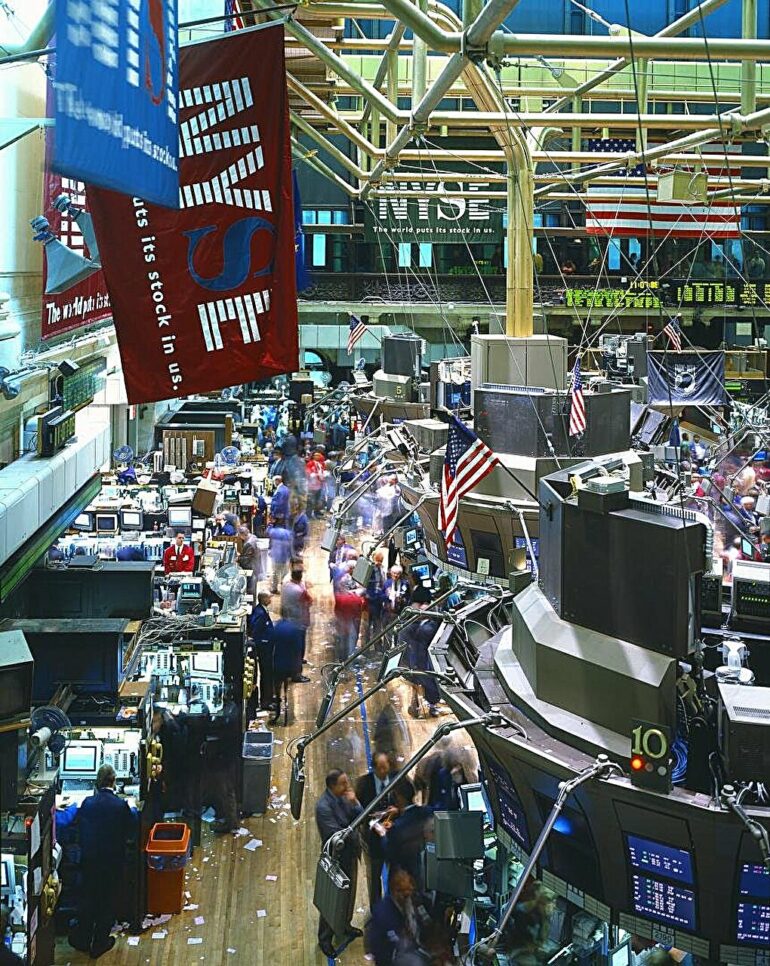Can artificial intelligence tools help predict stock price movement and volatility? Two South Dakota State University researchers believe so. Kaiqun Fu, assistant professor in SDSU’s Department of Electrical Engineering and Computer Science, and Yangxiao Bai, a graduate research assistant, have developed an AI-powered model that anticipates stock price movement and stock market volatility trends.
Introduced as “ALERTA-Net,” their model is a deep neural network that integrates macroeconomic data, search engine data and social media data—the first of its kind to do so. The paper is published on the arXiv preprint server.
“To the best of our knowledge, this is one of the early attempts to use the combination of social media, macroeconomic data and search engine information to predict both stock price movement and volatility,” Fu said.
U.S. stock exchanges are some of the most closely watched financial markets in the world and serve as a major indicator of a country’s economic well-being. They are also extremely difficult to predict with sustained accuracy. In terms of stock market research and predictions, two primary methods exist: technical analysis and fundamental analysis.
Technical analysis relies on past stock prices to predict future trends. Fundamental analysis utilizes external information and data. According to Fu and Bai, both methods have flaws that cause them to miss key stock market indicators.
“Technical analysis heavily depends on historical data, which can sometimes overlook sudden market changes due to unexpected events,” Fu said. “Assuming uniformly rational market behavior, this method can inadvertently create an echo chamber. This effect can cause trading signals to amplify themselves, eventually becoming disconnected from the actual economic context.”
Fundamental analysis, on the other hand, tends to focus on the financial markets and often neglects the symbiotic relationship between the broader economy and the stock market. However, it still takes a more comprehensive approach than technical analysis.
“Existing models mainly center on forecasting trend shifts and often neglect the importance of the scale of these changes,” Fu said. “In the realm of stock behavior, the magnitude of these shifts holds significant weight.”
To build this multi-layered, comprehensive prediction model, the research team—which included faculty members from Virginia Tech and Texas A&M University-Corpus Christi —selected 41 “blue-chip” stocks from the Global Industry Classification Standard. Fu and Bai then incorporated their expertise in social media information retrieval, a process that utilizes deep learning, an AI method, to gather and read large swaths of posts.
Data was sourced from Yahoo Finance, which charted the trajectory of the 41 stocks over a three-year period. The social media platform X, formerly known as Twitter, was used to source the social media posts. More than 7 million tweets that discussed the 41 different stocks were gathered, analyzed and included in the model.
“We recognize the significant influence Twitter volume has on stock trading,” Fu said. “We ensured that our model’s input parameters included the sentimental analysis of individual tweets and daily count of processed Twitter posts.”
Historical data from the Federal Reserve was also input into the model.
The model’s results show it performed better—in terms of accuracy—than DP-LSTM, a renowned stock movement prediction network, as well as other baseline prediction models.
“Our study revealed that incorporating macroeconomic data significantly enhances the predictive capabilities of the model for stock movement and volatility to varying degrees,” Fu said.
This is just the beginning for Fu’s and Bai’s work, as they will continue to experiment with new inputs and data sources to improve the model’s accuracy. Fu theorizes the model could become even more accurate by integrating audio and video sources. Further, he believes this type of modeling has applications far beyond the stock market.
“This type of modeling could help us predict traffic wait times on crowded interstates, for example,” Fu said. “The applications to this type of work are immense.”
More information:
Shengkun Wang et al, ALERTA-Net: A Temporal Distance-Aware Recurrent Networks for Stock Movement and Volatility Prediction, arXiv (2023). DOI: 10.48550/arxiv.2310.18706
Provided by
South Dakota State University
Citation:
Researchers develop AI-powered model to predict stock market trends (2023, November 21)



